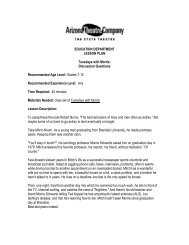Freud's Last Session (PDF) - Arizona Theatre Company
Freud's Last Session (PDF) - Arizona Theatre Company
Freud's Last Session (PDF) - Arizona Theatre Company
- No tags were found...
Create successful ePaper yourself
Turn your PDF publications into a flip-book with our unique Google optimized e-Paper software.
CLIVE STAPLES LEWIS was born November 29, 1898 in Belfast, Ireland to parents Flora and Albert.His education was undertaken by private tutors until 1908, when he was sent to Wynard School inWatford, Hertfordshire, after his mother’s death from cancer. The school was closed not long afterLewis began attending and he transferred to Campbell College, which he left after only a few monthsdue to respiratory problems. He then attended Cherbourg House, a preparatory school, and it is duringhis time there that Lewis first acknowledged his atheistic beliefs. In 1913, Lewis enrolled at MalvernCollege, where he remained for a single year before withdrawing to study privately under William T.Kirkpatrick, the former headmaster of Lurgan College who had also served as his father’s private tutor.C.S. Lewis, 1947.Three years later, in 1916, Lewis attended University College, Oxford, on scholarship, but once againwithdrew after a single academic year, this time to serve in the British Army in World War I. In Aprilof 1918, Lewis was wounded in battle and suffered deep psychological scarring. Upon his recovery hewas assigned to duty in Andover, England, before being released from the Army in December, 1918, afterwhich he returned to his studies at Oxford.While training for the Army, Lewis became close friends with a fellow soldier named Edward “Paddy” Moore, and the two made apact: if either of them were to die in the war, the other would look after both of their families. Paddy was killed in action in 1918 andLewis followed through on their agreement, choosing to live with Paddy’s mother, Janie Moore, as a surrogate son until her hospitalizationfrom dementia in the late 1940s.In May of 1925, Lewis received a fellowship teaching position at Magdalen College, Oxford, where he would teach until 1954. Whileat Oxford, Lewis and his circle of friends began an informal literary society that became known as the “Inklings,” whose membershipincluded Lewis’s older brother Warren Lewis, J.R.R. Tolkien, Nevill Cognill, Lord David Cecil, Charles Williams, and Owen Barfield.Having separated himself from the Christian faith of his childhood at the age of 15, through discussions with his fellow Inklings Lewisfound himself once again embracing his Christianity, which would provide much of the basis for many of his later writings.The mid-1920s brought with it the first of C.S. Lewis’s publications, beginning with the book-length narrative poem “Dymer,” publishedunder the pseudonym Clive Hamilton, in 1926. He followed his initial publication with many scholarly works, as well as the first adultscience fiction novel in his Space Trilogy in 1938. During World War II, Lewis delivered a popular series of radio broadcasts that werecollected into the book Mere Christianity, and in the 1950s began to publish The Chronicles of Narnia, the children’s series that wouldarguably become his best known works.In 1954, Lewis joined the faculty of Cambridge University as a professor of Medieval andRenaissance English. In April of 1956 he quietly married the American writer Joy DavidmanGresham in a civil ceremony to confer British citizenship upon her, and prevent her deportation.Not long afterward, Joy was diagnosed with terminal bone cancer, and the couple soughta Christian marriage ceremony at her hospital bedside in 1957. Her cancer went into a briefand somewhat miraculous remission before recurring in 1960, resulting in her death. Afterthe loss of his wife, Lewis published A Grief Observed under a pseudonym, to process hisown experience with grief. His authorship was revealed after his death with the permissionof the executors of his estate.Little Lea, home of the Lewis family, 1905-1930.In June, 1961, Lewis first began experiencing kidney problems that forced him to miss the autumn term at Cambridge for the sake ofhis own recovery. He returned to teaching in April of 1962 until he fell ill suddenly in July, 1963. After being admitted to the hospital,he suffered a heart attack and lapsed into a coma, from which he awakened the following day. Though he was released from thehospital, his health continued to decline, forcing him to resign from Cambridge in August. On November 23, 1963 C.S. Lewis died ofrenal failure, and was buried at Holy Trinity Church, Headington, Oxford. His death was largely overshadowed by the assassinationof President John F. Kennedy and the death of Aldous Huxley, author of Brave New World, both of which occurred on the same day.Ten years later Warren Lewis passed away, and was buried alongside his brother in the same grave at Holy Trinity Church.Over the course of his life and career, C.S. Lewis penned numerous books across multiple genres, contributing to both the fiction andnon-fiction cannons. In addition to the novels he is so fondly remembered for, he also published numerous discussions on theologyand classic mythology, as well as an autobiography. In 2008 he was named by The Times as one of the 50 greatest British writerssince 1945, and his multifaceted legacy lives on in film adaptations, classrooms, and home bookshelves well into the present day.4


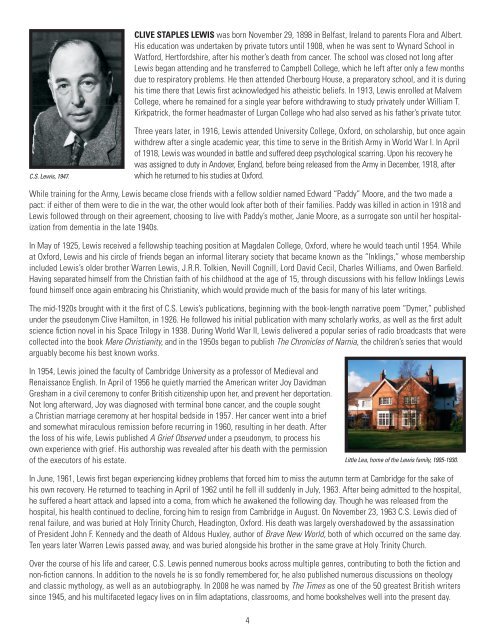
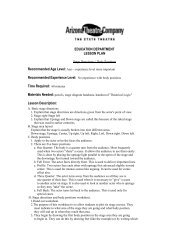


![Play Guide [356k PDF] - Arizona Theatre Company](https://img.yumpu.com/46218320/1/190x245/play-guide-356k-pdf-arizona-theatre-company.jpg?quality=85)

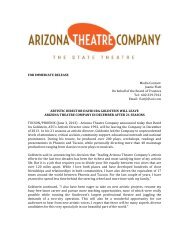
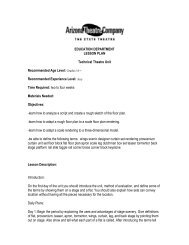
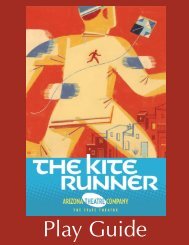
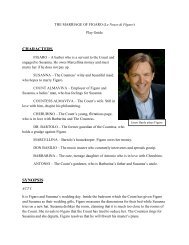
![[title of show] Arizona Theatre Company Play Guide 1](https://img.yumpu.com/24482689/1/190x245/title-of-show-arizona-theatre-company-play-guide-1.jpg?quality=85)
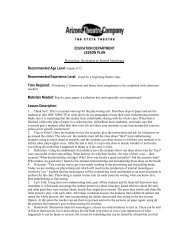
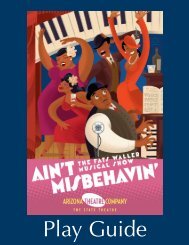
![Play Guide [1.2MB PDF] - Arizona Theatre Company](https://img.yumpu.com/11952176/1/190x245/play-guide-12mb-pdf-arizona-theatre-company.jpg?quality=85)
